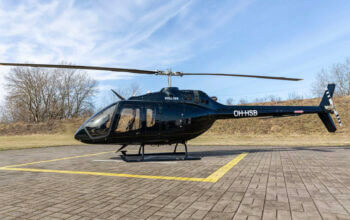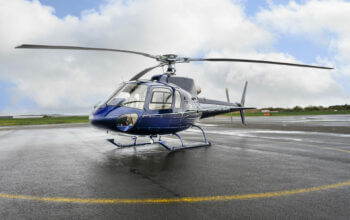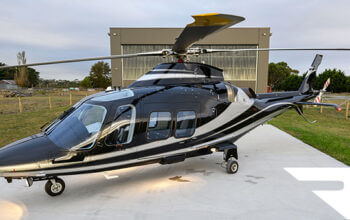Estimated reading time 10 minutes, 37 seconds.
It’s time to travel.
That’s the strong message coming from the Canadian Travel & Tourism Roundtable, a group that is urging both Ottawa and the provinces to relax the current restrictions surrounding travel within Canada as well as internationally.

The Roundtable includes more than 100 leaders representing the national travel and tourism sector, including Air Canada president and CEO, Calin Rovinescu. It sent an open letter to federal and provincial governments on June 11, urging them to align with other countries around the world that are beginning to lift restrictions.
“(M)any of the travel restrictions currently in place are simply too broad or unnecessary,” reads the letter. “Limitations on inter-provincial travel that restrict Canadians from freely exploring our country, should be removed. Canadians should be free to travel across Canada.”
The group is also advocating a more targeted approach to international travel, whereby visitors from countries deemed less “risky” would be allowed to enter Canada.
“The mandatory 14-day quarantine and complete closure of our country to all visitors from abroad is no longer necessary and is out of step with other countries across the globe,” said the Roundtable.
Rovinescu referred to the group’s letter on June 11 during a webinar hosted by Air Transport World’s Karen Walker, saying a re-start is critical for both aviation and the general economy.
“We’ve moved very quickly from a severe human tragedy, which is not dealt with yet, to one that is catastrophic for our industry and, quite frankly, an economic tragedy,” he said. “It’s a train barreling at us and we have to be mindful how to deal with it.”
Since the COVID-19 pandemic decimated the aviation industry, Air Canada has battened down the hatches and adopted a three-pronged approach to navigate its way through the crisis.
First, the airline took immediate steps to stabilize its spending and raise enough liquidity to survive.
Second, Rovinescu said restoring consumer confidence is the No. 1 driver affecting air travel recovery. Accordingly, Air Canada took early action to foster that trust. “We were not waiting for biosecurity measures to be determined by regulators. We are taking our own steps toward that to establish our own protocols. We introduced masks before any other airline in North America, we introduced temperature checks (at the gate before boarding), we distribute sanitization packs. We needed to do that because we needed to reassure the public it’s not business as usual at the airport or on the aircraft.”
Third, he said Air Canada is working to help change governments’ approach to the shutdown. He told webinar participants that in Canada, there are five different levels of constraints to restarting the travel and tourism industry: no foreign nationals are allowed into the country; there is an overall quarantine period of 14 days for anyone who does enter; there has been a complete shutdown of our land, sea and air border with the U.S.; there are different provincial restrictions applying to travel within Canada; and a blanket governmental advisory has been issued to avoid all travel.
“That stifles travel,” said Rovinescu. “The combination of these five (constraints) strikes me as being a combination of disproportionate steps. It is stifling the return to a more normalized aviation environment and stifling an economic recovery.”
Network restoration
As the airline cautiously moves forward, Air Canada’s network planning teams have been thrust into new territory. They are making assessments based on new artificial intelligence models that attempt to redefine demand, taking into account a number of confusing drivers including government restrictions.
“We recognize it will be a slow buildup,” said Rovinescu. “We have no expectation of a V-shaped recovery.”
Air Canada expects the third quarter (July 1 – Sept. 30) to yield 25 per cent of last year’s activity, “assuming we have access to some of the markets that are still closed right now.”
Rovinescu pointed out that bringing an airline back online is not an overnight process.
“Restarting the aviation industry is not like reopening a pizzeria,” he asserted. “Based on our requirements of taking aircraft out of maintenance, making sure we have the crew and connecting schedules built, these are all drivers that are important. We can’t go from five per cent of passengers to 55 per cent over night. It will take a minimum of three years to get back to 2019 levels.”
Of Air Canada’s proposed takeover of Transat AT Inc., Rovinescu merely said he was only at liberty to reiterate information already in the public domain: “The agreement was signed in the pre-COVID environment. We’ve filed for all regulatory approvals; the EU has put this into a Phase 2 process. We’re now in that process and we’ll see where that takes us.”
Mitigation measures
Meanwhile, Air Canada has taken drastic steps to cut costs and preserve liquidity.
“I would say the most difficult day of my professional career was when we had to announce our very significant workplace reductions,” admitted Rovinescu. “We had been in growth mode. Our company was hugely successful, with 220 destinations served around the world. The decision to lay off 20,000 people was extremely, extremely painful.”
The airline also took steps to rationalize its fleet, permanently retiring 79 Boeing 767 and Embraer E190 aircraft.

“Once the 767s exit, (leisure carrier) Rouge will become primarily a narrowbody operator with Airbus A320 and A321s. That will be able to serve lots of leisure destinations we had been building into the Rouge profile,” he continued.
“The backbone of the mainline widebody fleet is the Boeing 787; also, we still have the 777 and the A330. I expect all three to be key players long-term in the Air Canada fleet. Some of that fleet will cover for Rouge (on routes) where we’ve pulled widebody flying.”
In terms of the mainline narrowbody fleet, Rovinescu expects the Boeing 737 Max to be ungrounded towards the end of this year. Meanwhile, he said the Airbus A220 has performed extremely well with its impressive range, and Air Canada has continued to accept deliveries of the type through the pandemic in anticipation of putting them to work as soon as practicable.
“We haven’t started some of the routes we had planned, but that (aircraft) is something that is very exciting for us range-wise. We look forward to that being an important player in this.”
The fleet reductions have necessitated pilot retraining, with first officers and captains “scaling up and scaling down” in the unionized environment, where senior staff will get work first. Flight attendants are already trained on multiple aircraft and mechanics have also started cross-training.
Throughout the pandemic, cargo has been “one of the bright lights amongst a sea of bad news,” said Air Canada’s leader. “The cargo operation here has been phenomenal. I’m very proud of what that team did, pivoting into that very quickly. The cargo and maintenance teams were able to convert our 777 and now some A330s into a modified configuration, amazingly fast. We’ve now operated more than 1,500 cargo-only flights since March — although revenue has not been the same, of course, as with passenger flights.”
Rovinescu expects Air Canada will continue to offer cargo-only services, even after the passengers start to return, and will see what the future holds.
Burning through money
Despite its many efforts to streamline costs, Rovinescu said Air Canada continues to burn through $22 million a day.
He said that of the world’s top 20 air carriers, Air Canada is the only one who has not received any government funding.
“They do have a wage subsidy that is passed on to our employees, but the bottom line is we haven’t received anything. Our philosophy has been to keep our head down; we can control what we can control. We’ve managed to build a highly competitive airline over the past decade and intend to keep competing.”
Nevertheless, “no carrier has been configured to last for a very long period of time without receiving any revenue. We are a high capital-intensive business and we have a high fixed-cost structure and we are labour-intensive. So, you end up spending a tremendous amount. Overall, the industry will be substantially more indebted then it was before. It’s breathtaking to see this has occurred in just over three months.”
While he lamented the fact that competing airlines have received billions of dollars in government aid while Air Canada has so far received nothing, Rovinescu also said some of that help comes in the form of loans while others have strings attached.
“There’s no question the best strength is to do it on our own,” he added. “The best thing government could do for us is enable us to do some business.”
According to the Canadian Travel & Tourism Roundtable, the national travel, tourism and hospitality sector employs 1.8 million people and contributes $102 billion to the country’s economy.









This is like a breath of fresh air – a rational approach to balancing life, sanity, commerce, relationships.
Fatality rate is max 4% and no vaccine is likely to be there before mid 2021 anyway or so I hear the experts. Even when available the doses needed will be limited.
CERB CESB and such will be long gone by then….. Even trade requires travel to sell stuff, keep relationships green ..
This approach to hunkering down is completely for the idle rich or those assured of handouts .
Lockdown or no lockdown this government cannot keep people from dying
I agree they need to end this 14 day quarantine nonsense, and get flights in the air again. Presumably, there will be strict measures in place pre-departure, during the flight and upon arrival.
Not a big fan of this airline however that continues to hold onto passengers money and not offer refunds for flights they had to cancel. AC’s CEO goes crying to Ottawa anytime a premium airline wants to get more routes in our country as well; and their ancillary revenues annually are a billion dollars or so. Wonder if they will add on a COVID-19 fee for future travel.
I have got Air Canada flights cancelled 3-4 times already and some airfare cannot be refunded. This caused quite some frustration and hardship. If Air Canada could and can not fly, why booking tickets is still going on? Only when the date of departure got close, I got a short email message again and again saying due to Covid 19… the flight has been cancelled. That was it. My money is kept in the Air Canada account , it is hard for customers to suffer this during this difficult time, isn’t it?
Bang on. Although only my CEO for 3 months, Calvin Rovinescu’s reputation among employees is stellar; and he’s right about this. Airlines cannot be the only industry where constraints are not being lifted, especially since it’s likely going to be the last industry to recover. They rely on a strong economy that affords businesses and individuals the disposable income needed to travel; hence his 3 year prediction for return to normal, I suspect.
If airlines are not permitted some leeway to navigate what and take advantage of what few options they have, they may not recover at all.
I hope this the industry’s arguments don’t fall on deaf ears as I, for one, want to get back to the industry I love and preferably with the company that took me 30 years to get on with right before this all unfolded.
I hope other airline and travel industry CEOs will back him up. If this chorus gets loud enough, governments won’t have any choice but to re-open their borders. This is a political matter, not a medical or scientific one.
It’s time the federal government steps in and help air canada. 20,000 people have lost their jobs. People with 23 yesrs of service are laid off. Come on.
He’s got 2.what billion in ticket revenue for flights people can’t take, nice interest free loan Calin. He talks about what others are doing so selectively. What other airlines in the US and EU are doing is giving people back their money. Skipped over that part. Restore confidence in Air Canada? Start with refunds.
It is time time to travel safely and NEVER BOOK WITH CANADIAN AIRLINES AGAIN. Taking money from people for flights which did not happen is theft. Please do not expect Canadians to flight with you in a future. We will book our flight with American and European airlines because they did a right thing by refunding their passengers.
This is untrue. They have refunded the tickets for those that purchased refundable tickets. You have the choice when you buy your ticket but often people just pick the cheapest one and then get upset that it doesn’t come with the same perks of the more expensive tickets.